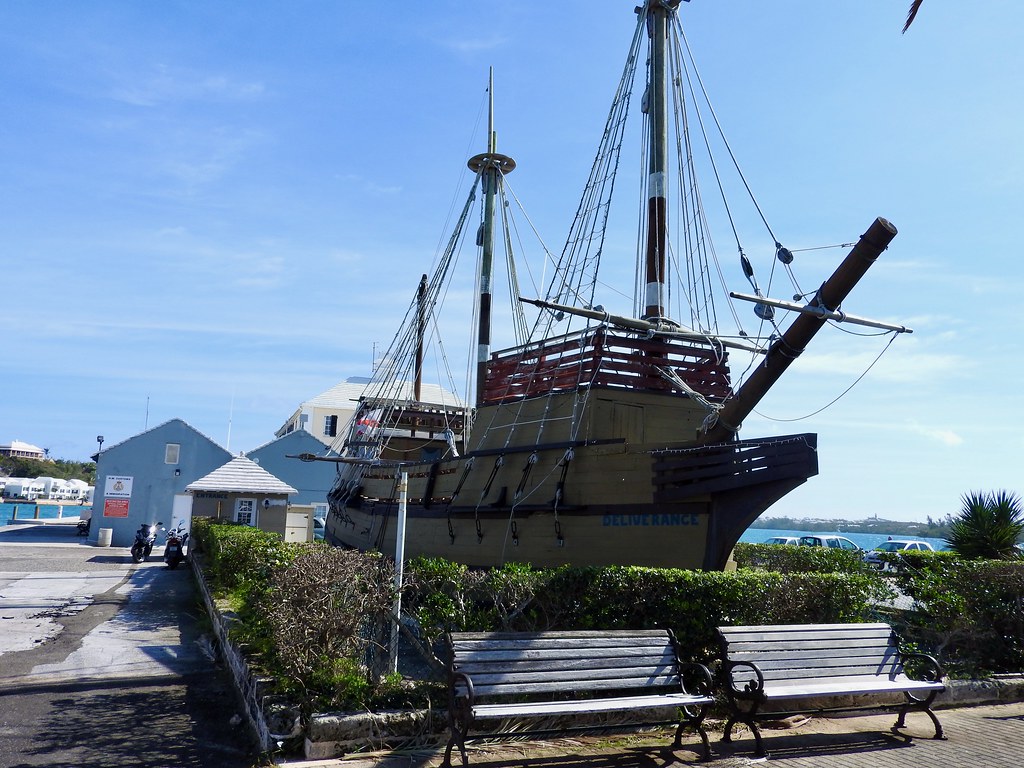Bermuda was once part of Virginia. It would be natural to wonder how that might happen. There is a striking difference between the two. Most visibly, Virginia occupies a solid placement on the North American mainland. Meanwhile, Bermuda is an island archipelago 650 miles (1046 kilometers) out to sea. If Bermuda was directly off the coast of Virginia it might make more sense but it doesn’t even qualify in that manner either.
From a political and cultural perspective, Virginia was one of the original 13 colonies and an integral part in the formation and continuation of the United States. On the other hand, Bermuda retains firm ties to Britain and remains its oldest overseas territory.
Virginia and Bermuda are nowhere close to each other. So what’s going on?
A New Colony
We have to go back in time to Jamestown. That was the first permanent English settlement in what would someday become the United States. James I chartered two Royal Companies to establish colonies on the North American mainland, one of which was the Virginia Company of London, also known as the London Company (or simply as the Virginia Company since the “other” Virginia Company failed to produce a viable colony). This group founded the Virginia colony of Jamestown in 1607. You probably remember that from your elementary school history lessons, right? So no surprises there. I’m sure you’re still with me.

A brief tangent: if you’re ever near Jamestown you might consider taking the ferry across the James River (I’ve even posted a little video). It’s a beautiful ride over the water to historic colonial-era plantation sites. Plus, best of all, the ride is free. Now back to the story…
Times were tough in Jamestown during the early years. Mortality rates rose sky-high due to disease, drought, poor leadership and Native Americans who wanted them to go away. Ships would arrive, drop off people and supplies, and return to England to find more. For awhile this became a conveyor belt of lethality, with ships barely replenishing dying settlers.
Shipwrecked
The third supply expedition experienced a particularly harrowing ordeal as the convoy sailed towards the Virginia colony in 1609. A violent storm, probably a hurricane, pounded the flotilla for several days. Driving wind and rains and a roiling sea separated the badly-beaten flagship Sea Venture from the rest of the convoy.
Admiral George Somers, commanding the Sea Venture, spotted land and deliberately steered his ship aground to save it from sinking. Somehow, miraculously everyone survived. They probably thanked the heavens for being within proximity to the only minuscule speck of rock in a vast sea.

However, now they now faced a different dilemma: they were shipwrecked on a small, remote, uninhabited archipelago. They named it the Somers Isles (imagine that), sometimes called Virgineola (imagine that too; not too creative these folks). Today we’re more familiar with its current name, Bermuda. In the days immediately following the shipwreck though, it was probably simply known as dry land.
The 150 or so castaways remained trapped on the island for ten months. Fortunately Admiral Somers had the foresight to ground his vessel in shallow waters on a reef where it did not sink below the surface. That saved lives but it also damaged the Sea Venture beyond repair. Nonetheless, it could still be picked for supplies and equipment bound for Jamestown. This included wood from the ship itself.
Misfortune Turns to Fortune

These were capable, resourceful people with the necessary skills and supplies to survive in a wilderness area. They took stock of their situation and built two smaller ships from local cedar and from the wreck of the Sea Venture over the course of several months. Then they set sail for Jamestown like nothing happened. They also left behind a couple of men to cement England’s claim to Bermuda. The guys remaining there probably did better than those continuing on to Jamestown. Upon arrival the former castaways learned that Jamestown was in full disarray. The colony had just survived what would later be called the Starving Time.
Bermuda sounded pretty nice once word got back to England, especially in comparison to the woes of Jamestown. The King amended his Royal Charter to the Virginia Company to include Bermuda in 1612. In turn, the Virginia Company sponsored a group of settlers bound for the archipelago which soon established St. George’s Town. Thus, Bermuda became part of Virginia.
The arrangement lasted only a couple of years. Administration returned to the Crown in 1614 when the Virginia Company found the arrangement unprofitable. Then the charter conveyed to the the Somers Isles Company in 1615. But for two glorious years, Virginia’s boundaries stretched for hundreds of miles into the Atlantic Ocean.
Easy come. Easy go.

Leave a Reply